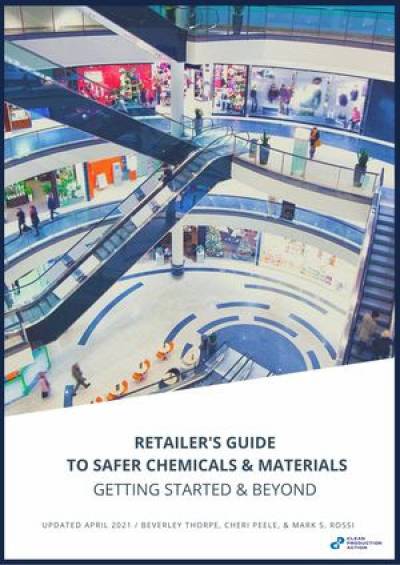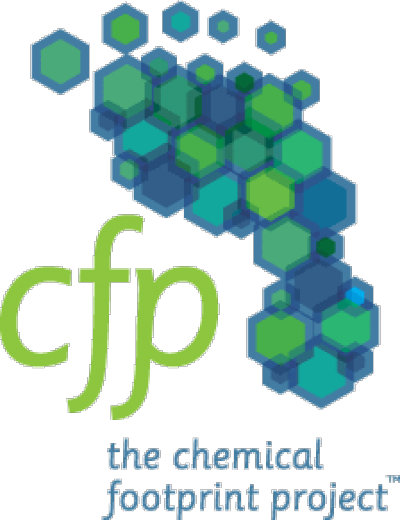The Chemical Footprint Project 2021 Survey will be launched on April 15
th, and we thought it a good idea to remind companies how the four interlinked pillars in the CFP Survey can help companies reduce their chemical footprint. And why this is more important than ever.
News of the impact on human health of the use of chemicals in products and manufacturing processes continues unabated. Published in February,
Count Down, by Shanna Swan and Stacey Colino, documents how chemicals in the modern environment are endangering fertility, including a one percent reduction per year in sperm count worldwide. In March, scientists at the University of California San Francisco
published a study reporting the detection of 109 human-made chemicals in the blood of pregnant women and the cord blood of their newborns, including plasticizers, flame retardants, and PFAS chemicals used for oil and water resistance in cookware, carpets, and clothing, among other uses. Fifty-five of the 109 chemicals had never before been reported in people.
Manufacturers, brands, and retailers can track their use – and reduction – of chemicals of high concern by measuring their chemical footprint, the amount of chemicals of high concern used in their products. Both measuring and reducing a chemical footprint require the integration of information from across parts of a company in ways not typically brought together. Success, therefore, depends on upper management support, as well as the creation and implementation of a chemicals management program with a to reduce the use of chemicals of high concern.
The four pillars of the Chemical Footprint Project Survey outline steps companies can take to build chemicals management programs, with best practices developed through over 15 years of collaboration with businesses across sectors and environmental NGOs.
- The Management Strategy pillar outlines high-level criteria for a robust corporate chemicals management policy with a goal of hazard reduction, along with steps for effective integration into a company’s business strategy.
- The Chemical Inventory pillar goes into detail on chemicals policy implementation, focusing on the scope of hazardous chemicals companies restrict, along with the level of detailed information they collect from their suppliers regarding chemical content.
- Building on the resulting chemical inventory, the Footprint Measurement pillar lays out steps for hazard reduction: hazard assessment, measuring the chemical footprint of the company’s product portfolio, setting goals for reducing the use of inherently hazardous chemicals, promotion of safer alternatives, and measuring progress.
- Finally, the Disclosure & Verification pillar helps companies disclose their progress in reducing their chemical footprint to consumers, the public, and investors.
TJX, the parent company of Marshalls, Sierra, and TJ Maxx,
recently announced it would be establishing its first chemicals policy, noting that it will be undertaking “a review of the Management Strategy section of the CFP Survey in order to review relevant industry focus areas for our policies development.”

Our recently updated
Retailer’s Guide to Safer Chemicals continues to provide value, not only because it is based on the CFP Survey with numerous examples drawn from the retail sector, but also because it outlines the business case to move beyond regulatory compliance.
Finally, the
fifth annual Who’s Minding the Store? Retailer Report Card, released March 30
th, emphasizes the value of chemical footprinting by:
- Scoring retailers on chemical footprinting metrics.
- Highlighting retailers that responded to the CFP 2020 Survey – Ahold Delhaize, ALDI, Dollar Tree, Target, Walmart, and Whole Foods Market.
- Noting retailer signatories to the Chemical Footprint Project – CVS Health, Dollar Tree, Rite Aid, Target, Walmart, and Whole Foods Market – who engage their suppliers in participating in the CFP Survey.
- Recommending retailers participate in the CFP 2021 Survey.
As the Mind the Store campaign notes, “the largest retailers in the United States and Canada continue to make substantial progress towards reducing and eliminating toxic chemicals and offering safer, more sustainable products and packaging.”
Join over 60 companies that have participated and take the next step toward reducing your chemical footprint. On April 15
th,
take part in the CFP 2021 Survey.


 Our recently updated Retailer’s Guide to Safer Chemicals continues to provide value, not only because it is based on the CFP Survey with numerous examples drawn from the retail sector, but also because it outlines the business case to move beyond regulatory compliance.
Our recently updated Retailer’s Guide to Safer Chemicals continues to provide value, not only because it is based on the CFP Survey with numerous examples drawn from the retail sector, but also because it outlines the business case to move beyond regulatory compliance.
